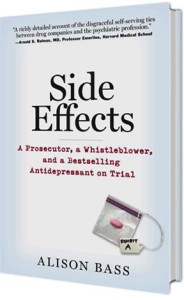Nick Kristof is at it again. On Sunday, the New York Times columnist wrote yet another column about sex trafficking that was filled with inaccuracies and misleading statements. He was writing about a new lawsuit filed by two young women who say they were trafficked as teen prostitutes through ads that appeared on the online website, Backpage.. In his column supporting this lawsuit, Kristof says that Backpage makes it easy for traffickers to peddle underage prostitutes, and he blasted the online website for “blocking efforts by police or families to trace missing girls and boys.”
That is simply not true. But before I explain why, let me first say that the commercial sexual exploitation of children is a major problem in the U.S. and one that demands our best minds to solve. But shutting down Backpage (and before it craigslist) is not the solution to eradicating underage prostitution. I have spent the last four years interviewing law enforcement, sex workers and experts on the sex industry for an upcoming book, Getting Screwed: Sex Work and the Law, and they all say that shutting down one or two websites that permit ads for sex work will only make things worse for girls and women who are being sexually exploited. Not only will it drive sex advertisers to offshore websites that are not accountable to American laws or law enforcement, but it will make it more difficult for adult sex workers to work safely and protect themselves from violent clients and sexually transmitted disease. (Research shows that when sex workers can’t advertise online and screen clients, they are often forced onto the street, which is a much more dangerous venue for selling sex.)
A few years ago, a number of state attorneys general forced craigslist to close its adult section but that didn’t stop sex ads.They merely migrated to other sections of craigslist (like casual encounters) or to other websites. like Backpage. Contrary to what Kristof claims, Backpage at least works closely with law enforcement to identify and rescue underage youth who are being advertised on the website. Police in New York and many other cities use the information obtained from Backpage to arrest and prosecute pimps who place the ads and sexually exploit children.
“When you read that a girl was trafficked through Backpage, she was probably rescued because of us too, because we supplied information to law enforcement,” says Liz McDougall, general counsel for Backpage. “But you never hear this side of the story.”
In early 2013, for example, Backpage worked with the NYPD to identify and rescue four underage girls who were being advertised online. “With 20-30 minutes we were able to pull from our databases the information [police] requested and send it to them,” McDougall says. “Two of the children they were able to rescue in 24 hours, one of them it took a few days and the fourth took a couple of weeks. We also provide witnesses to testify about authenticating records to ensure the prosecution of pimps and traffickers.”
Backpage not only supplies police departments and prosecutors around the country with information about specific ads and who placed them, but the website routinely send reports to the National Center for Missing and Exploited Children (NCMEC) about cases in which it appears that an underage youth is being advertised on the site.
“We have 100 people involved in reviewing every ad before it goes online in the adult and dating categories,” McDougall says. “Over time, they have become really good at learning how to recognize children and adolescents. Even so, it’s difficult. Pictures get swapped, code words are used.”
Backpage was so forthcoming with NCMEC that the organization at one point lauded Backpage’s reporting and said they were satisfied with both the volume and quality of the reports, McDougall says.
In his column, Kristof claims Backpage refused to use screening software that might detect ads for underage girls. Yet such software doesn’t exist, according to McDougall. “There is no software or easy formula to identify a victim of trafficking online,” she says. “It would be a godsend to all of us if there was.”
It’s bad enough that Kristof spews misleading allegations from a lawsuit that has not yet gone to court and doesn’t bother to dig up the actual facts. What also bothers me is the way he is so cavalier with his statistics. In his very first sentence, Kristof claims that there are “100,000 underage girls and boys sold for sex in America each year.” This statistic has been repeatedly debunked as false by researchers who have studied the issue in depth. For instance, a study by researchers at the University of New Hampshire found that police nationwide arrested or detained 1,450 juveniles for prostitution in 2005. That number closely corresponds to an earlier study, which analyzed data from the FBI’s Uniform Crime Report, and found that 1,400 juveniles were arrested nationally for prostitution and commercialized vice in 2003.
Of course, that is not the correct figure either since it’s only the number of underage prostitutes who have come to the attention of law enforcement. But in doing research for my book, I interviewed one expert after another and they all agreed that there is simply no truth to the 100,000 a year number. The number of underage youth in this country who are being sexually exploited is much lower, they say.
Even so, there is no question that underage prostitution here and abroad is a pressing problem. And as these experts told me, if we really wanted to do something about it, we would focus on the root causes, things like poverty, child abuse and parental substance abuse, which drive teenagers from their homes and into the arms of exploitative pimps. Closing Backpage or any other online website that works as closely with law enforcement as it does will only make it more difficult for society to get underage teens out of the sex trade and into the kind of social services they desperately need.
(A version of this blog was first posted on The Huffington Post. )



Fantastic rebuttal to the myriad of incorrect statistics being lauded by folks who should know better. I look forward to the new book when it comes out.
Thank your for the article. While applaud Kristof’s passion on the subject (I’ve seen his PBS documentary), playing fast and loose with facts does not help the cause.